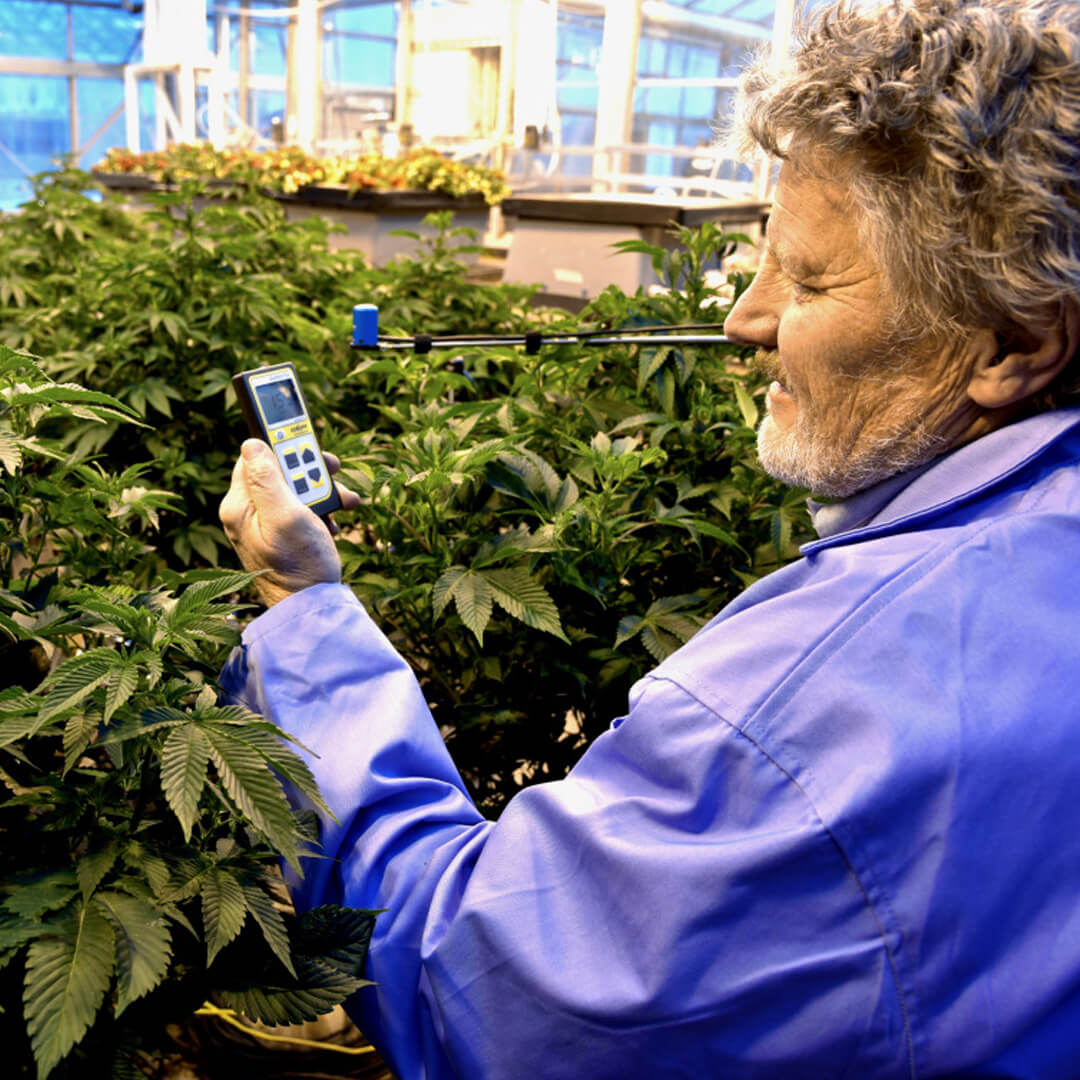Increasing Cannabis Economic Yield through Lighting
Introduction:
Cannabis is a lucrative crop that can be grown for profit under lights, but the cost of electricity is a large part of overall production costs. Progress in light-emitting diode (LED) technology has led to more efficient fixtures, but these fixtures vary in their efficacy. The researchers in this study wanted to investigate how the spectral quality and PPFD of the lights affected Cannabis yield and quality and also evaluate the effect of fixture efficacy on revenue in three different trials.
Set Up:
- Rooted cuttings of the medical hemp cultivar “Trump” were grown in a walk-in growth room with five sections; each section had white reflective walls and common atmospheric conditions.
- Temperature was measured with an Apogee shielded, fan-aspirated, precision thermistor (ST-100) mounted at canopy height in each chamber.
- PPFD was measured using an Apogee full-spectrum quantum meter (MQ-500).
- Spectral traces of the light fixtures were measured with an Apogee spectroradiometer (PS-300).
- Radiation measurements were made using an Apogee four-way net radiometer (SN-500-SS).
Results:
Through the three different trials, they found that as the percent of blue photons increased from 4 to 20%, flower yield decreased by 12.3%. This means that flower yield increased by 0.77% per 1% decrease in blue photons. However, it is thought that far-red photons also played a small part in the 12% decrease. Additionally, the blue photon fraction had no effect on final cannabinoid concentration. In regards to the efficacy of the lights, they found that at an energy cost of $0.10 USD per kWh, it costs 1.6 cents per mol of photons from an HPS light fixture, while it only costs between 1.1 and 1.3 cents per mol for the LED lights.Conclusion:
Optimized lighting is critical to the economics of indoor Cannabis cultivation. This study indicates that efficacy is more important than spectra and that decreasing the blue photon fraction in electric lights for growing Cannabis can increase yield. Finally, they also discovered that LEDs are more cost effective than HPS lights for growing Cannabis.

Image 2. One of the authors, Dr. Bruce Bugbee, inspecting Cannabis with an Apogee MQ-500
Application Summary

Image 1. Photo by Wilhelm Gunkel; Collection of lightbulbs
Summary
Four different Apogee Instruments products, ST-100, MQ-500, PS-300, and SN-500-SS, are used in researching how to increase Cannabis economic yield with lighting.
Apogee Sensors Used
Organization
Crop Physiology Laboratory, Department of Plants, Soils, and Climate at Utah State University
Location
Logan, Utah, USA
Authors
- F. Mitchell Westmoreland
- Paul Kusuma
- Bruce Bugbee
Reference Article
